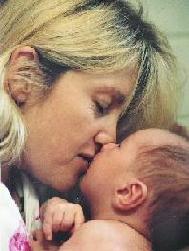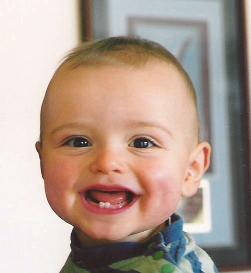Vaccination Information Service

"A foolish faith in authority is the worst enemy of truth." Albert Einstein

Comment on 2009-2011 news:
Lessons from whooping cough epidemics
Bronwyn Hancock 15 January 2009,
last updated September 2011
One of many naturally occurring cycles
Whooping cough (= pertussis), like many diseases, has a natural cycle, which in its case has been approximately every 44 months right around the world.
So recent peaks have been in 1996-7, 2000-2001 and 2004-2005, globally.
When reality is not matching a theory - is it not time to change the theory?
Doctors in Australia have admitted to being puzzled because with the intensified vaccination coverage since 1996, instead of the number of cases in each peak of whooping cough falling as they thought would be the case, it has only been consistently rising.
The number of cases in 2008 was, at over 14000, the highest since it was made a nationally notifiable disease in 1991.
Not surprisingly, neither has the interepidemic period been lengthened by higher vaccination coverage. On the contrary, the interepidemic period has suddenly disappeared. In 2009 the number of cases doubled yet again to almost 30000, and in 2010 it increased further still to almost 35000. This year, 2011, is set to be yet another record year.
Why has this been happening? A main clue is that the incidence of whooping cough began to rise at an unprecedented rate after 2003, in which year the whooping cough (DTaP) vaccine began to be recommended for adults too – “health care workers and people working or living with small children, including parents, grandparents, those planning pregnancy and child care workers”. It is in these age groups, over 25 year olds and particularly the over 60 year old age group, that notifications since 2003 have dramatically increased.
Doctors should not be surprised at this trend, because if they studied medical research, they would have seen this same pattern occur frequently all over the world. In fact right back when this vaccine was trialled in Sweden in the early 90s, the trial was terminated early, after only 6 months, because after 3 doses there was an epidemic of whooping cough in those vaccinated babies (J Hosp Infect, 1995).
Similarly, up until 1978 in the US, and for the past 100 years prior to that, whooping cough had declined dramatically (90% of that decline was before the vaccine was introduced), but in 1978 most US states mandated vaccination for school entry, and exactly from that point, the decline slowed, stopped and reversed, and whooping cough has been rising ever since (see Summary of Notifiable Diseases United States - CDC MMWR reports).
Time and time again, that same pattern gets reported. In England in the late 70’s, after reports about brain damage from the whooping cough vaccine reached the media, the coverage temporarily declined to 30%, and that was followed by a particularly long interepidemic period, with record low number of deaths being reported (Lancet 1982). However, the brain damage was soon forgotten and the vaccination rates rose again a few years later.
Click here for more on why morbidity and mortality trends have caused confusion, and what they show.
What should protect infants from whooping cough (and other childhood diseases)
Fortunately for most people, whooping cough is only dangerous under the age of 6 months, and what used to be fortunate is that babies used to be normally protected from contracting whooping cough by the transplacentally transmitted immunity that they get from their mother. But unfortunately, it has been reported by various researchers, including Mullholland (Lancet 1995), that this transplacentally transmitted immunity normally passed on is weakened or destroyed in mothers who have been vaccinated themselves as infants.
The two-fold counterproductive effect of vaccination
So unfortunately in that indirect sense as well as a direct sense, the vaccine appears to be having a detrimental effect on the immune system and is only increasing, not reducing, susceptibility to whooping cough, including in the only age group in which it is considered dangerous. In fact, before that vaccine trial in Sweden (since 1978, when its total ineffectiveness was noted in an epidemic), Sweden was not vaccinating against whooping cough and it was not occurring in babies under 12 months of age.
Important lessons from cases in the 1996-1997 epidemic
An article was published in the Medical Journal of Australia (March 1998) concerning the whooping cough epidemic that occurred in 1996-1997. The researchers reviewed the cases of the 4 alleged infant whooping cough deaths in NSW. Firstly, they found that in at least 3, possibly all, cases they had contracted the infection from their fully vaccinated sibling and/or mother, so the conclusion drawn, about which they were warning doctors (who sadly don’t read medical research), was that they should not assume that because someone is vaccinated that they cannot have whooping cough. Unfortunately many doctors still make that false assumption (because they do not read medical research, they did not read that article!) In fully vaccinated babies they often diagnose it instead as "croup".
Also these infants' mothers, as a result of having been vaccinated as children, had poor or no passive immunity to pass to their newborns via the placenta (Lancet 1995), making the infants susceptible to what is traditionally a disease of older children, for whom it is documented to be beneficial in priming the immune system.
What was additionally significant was that these cases, all in infants under 6 weeks old (5, 2, 5 and 4 weeks), were not very serious until they were admitted to hospital and administered high doses of intravenous antibiotics that had already been demonstrated to be dangerous for infants under 1 year old. It was only then that they deteriorated and died. Yet what gets blamed? Whooping cough.
The key to effective prevention and treatment - an immune system that is well supported, not interfered with.
Also the after-effects of whooping cough and other infectious diseases depend on how the diseases are treated. If treated the right way, the child’s health is actually benefited from going through childhood diseases – it was published in the 1990s that contracting whooping cough reduces the risk of developing asthma, but if infectious diseases are not treated well enough, particularly if anti-pyretics (e.g. Panadol or Tylenol) and/or antibiotics are administered, that is when lasting adverse effects can occur.
Along the same lines, the whooping cough vaccine itself is the most notorious of the vaccines for causing asthma. Vaccines cause the very same complications that can occur when the infection is wrongly managed (e.g. asthma), which is the opposite of the beneficial effect that occurs when the infection is well managed (lowering the risk of asthma).
Summary
So in summary, vaccines actually are sensitising recipients' immune systems, instead of immunising them - they are having the opposite effect from what is intended.
The big winner, once again, is the drug companies, who make the vaccines and sell the antibiotics, which are still given as treatment despite their poor record, instead of proven very effective treatments such as Vitamin C.
It is the children who do not encounter such interference that have been found to cope better with infectious diseases.

